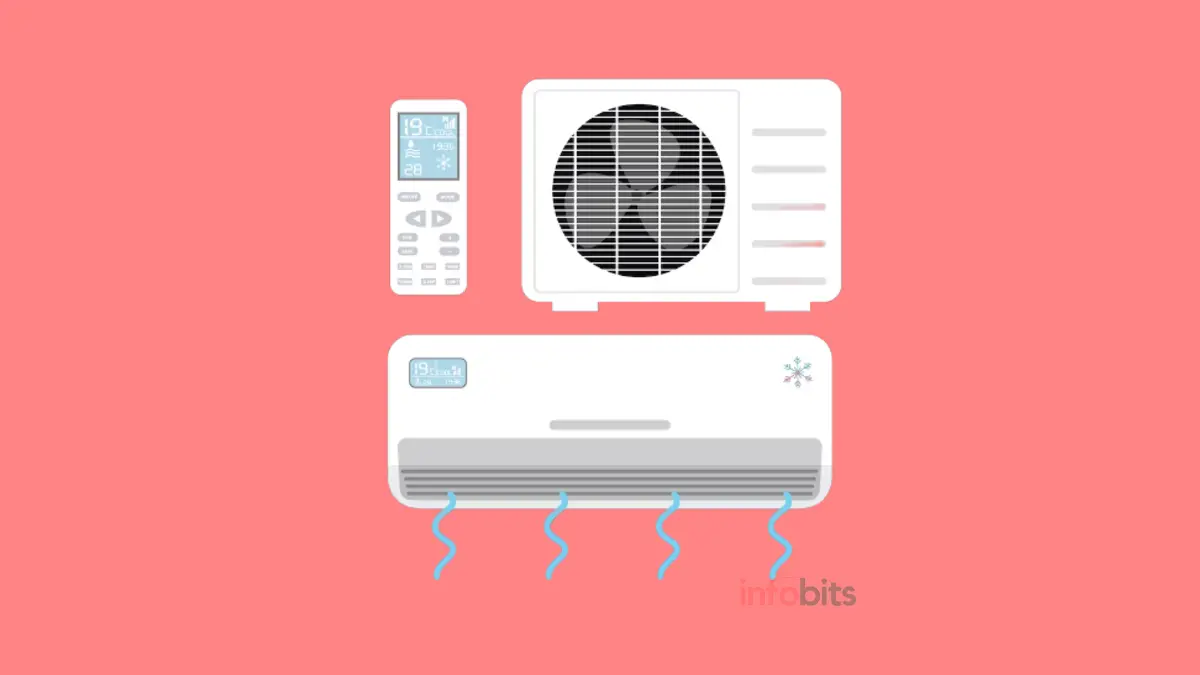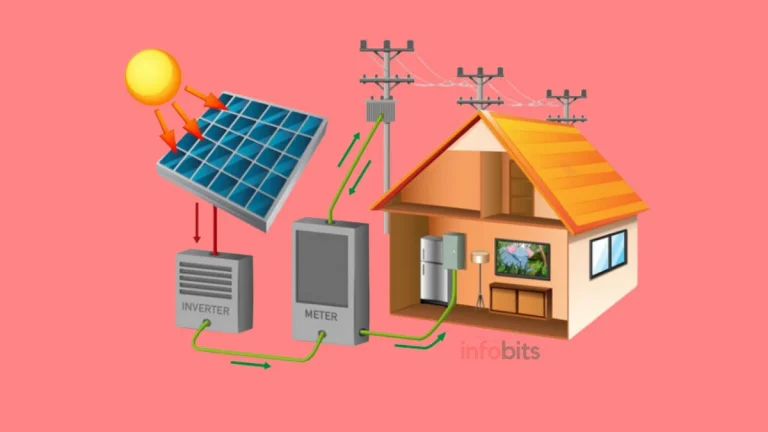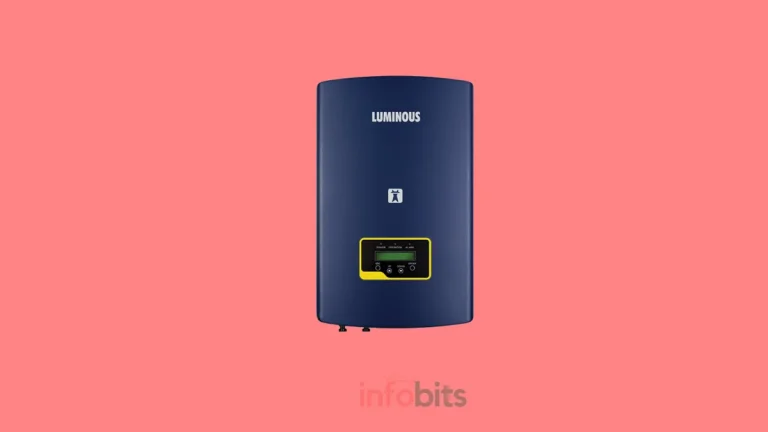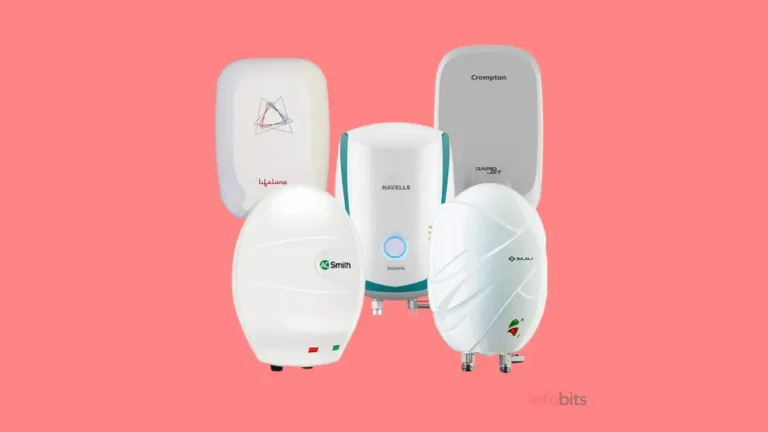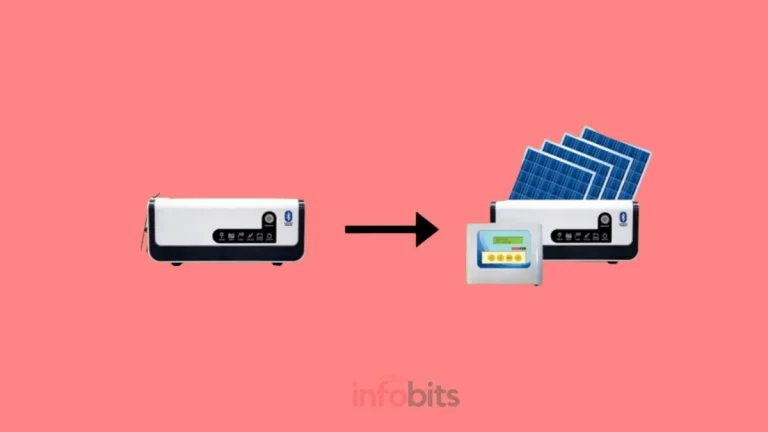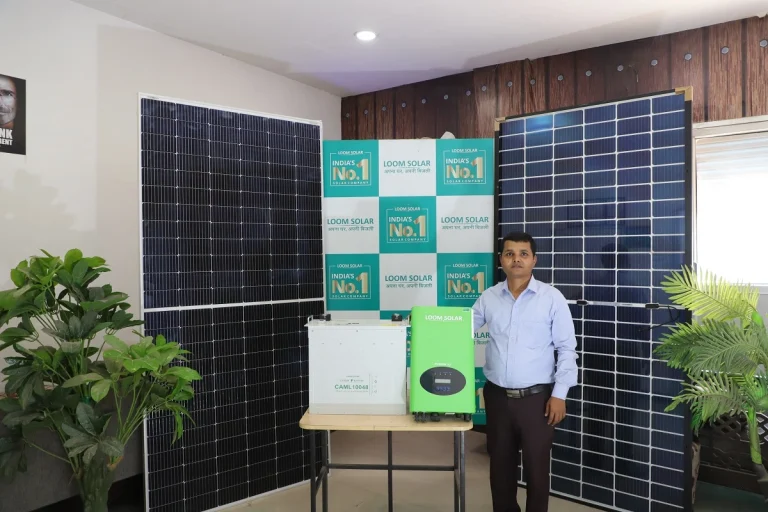AC Buying Guide India 2024: Tips for Buying the Best Air Conditioner
Air conditioners, formerly considered a luxury, are now almost common in lower and middle-class homes. Air conditioner sales are also up this year as a result of the hot weather.
This time of year, we get a lot of queries from our readers about air conditioner features and what to look for when purchasing one.
As a result, we decided to compose an AC buying guide describing these specifics. We hope that this will help you choose AC for your home.
If you are confused about how to choose an AC for your home or office, consider the following points.
a) The Size and Cooling Capacity of the Unit
Domestic consumers have the option of purchasing one-ton or 1.5-ton air conditioners. According to simple calculations, a 1-ton capacity is enough if the room size is 100-120 square feet.
If it is higher, 1.5 tons should be taken into account. Similarly, 1.5 tons is preferred if the upper-floor rooms are directly exposed to the sun on the roof and walls.
Only select a 2-ton capacity if the room is extremely large.
There are already 0.8-ton air conditioners for rooms less than 100 square feet on the market. Air conditioners with 1.2-ton capacities are also available which can be used as small bedroom AC.
The minimum tonnage requirement of an AC can be understood from the following table.
| Room Size (sq.Ft) | AC Capacity (Ton) |
|---|---|
| <120 | 0.5 |
| <150 | 0.75 |
| <180 | 1 |
| <250 | 1.5 |
| <350 | 2 |
| <500 | 3 |
b) The Type of Air Conditioner
Split air conditioners and window air conditioners are the main air conditioner types in India that we consider when purchasing an air conditioner for our home.
Split air conditioners, which have two different sections, an interior unit, and an exterior unit, are more widespread these days.
Window air conditioners from the past are no longer in use or readily available.
Clients who have practical concerns can go ahead with the portable air conditioner, but it is less energy-efficient. Because these are not in popular demand, only a few brands and models are available.
Outdoor air conditioning, cassette air conditioning, ductless air conditioning, tower air conditioning, and other special-requirements air conditioning systems are not covered in this article as they are not in our scope.
c) Technology Used
This is another important thing you should be aware of before buying a new air conditioner. Most of the technical details are available in the air conditioner specifications sheet or on the respective website.
Until recently, there were two types of air conditioners on the market: those with fixed-speed compressors and those with contemporary inverter compressors, but now only inverter compressor air conditioners are available by top brands.
So the debate over whether to buy standard air conditioners or digital inverter air conditioners is no longer relevant.
However, hearing about the various technologies and features in digital inverter air conditioners, such as dual inverter, triple inverter, and convertible, can be perplexing.
So it would be beneficial to learn more about them.
Older air conditioners had fixed-speed compressors that work at only one speed. As a result, they simply had two options: on or off.
To manage the cooling of the room, such compressors were turned on and off at regular intervals. As a result, the compressors were not particularly energy efficient, drawing a substantial amount of starting current while switching from off to on.
Inverter compressors using BLDC motors were developed as a solution to this problem. These air conditioners have overcome their negative image as large current sinks by allowing for easy speed adjustment and being more energy efficient.
The compressors are constantly running, and the same temperature is maintained by raising and lowering the compressor speed in response to the ambient temperature.
An electronic circuit board drives the compressor in such air conditioners
Single Inverter Compressor / Dual Inverter Compressor / Triple Inverter Compressor
A typical digital inverter compressor has a compression chamber and a rotor, which is a rotating component that provides compression.
A dual inverter compressor features two staggered compression chambers and two rotors positioned on the same shaft in opposing orientations (180 degrees). As a result, the compressors’ stability improves, vibrations are decreased, and they are more efficient.
Compressors, on the other hand, have the benefit of only needing to rotate at a lower speed for a given capacity, which increases their longevity. Dual-inverter air conditioners are currently used by almost every major company.
So, what exactly is a triple inverter compressor?
Like a dual inverter does a triple inverter features three rotors and compression chambers?
No. That is not the case. It also only has two rotors.
However, the inverter motor is designed differently. It employs an 8-pole motor with additional windings. A 4-pole motor is characteristic of a twin inverter compressor.
Samsung was the first to introduce triple inverter compressor technology. The compressor is more powerful with an 8-pole motor, vibration, and noise are reduced, and the space can be cooled rapidly.
Initially, only Samsung took advantage of this technique, but it is now claimed by firms such as Hair, Sansui, and Nokia.
The introduction of fully digitally programmable and controlled compressors resulted in an avalanche of features on various models. Each firm offers different benefits under its brand, but there are no substantial distinctions other than marketing tricks.
Convertible AC
Most brands advertise convertible 5-in-1, 6-in-1, and 7-in-1 air conditioners. Have you considered what this is?
As previously said, when compressors became programmatically configurable, this was an easy feature to implement.
That is a function that allows you to gradually raise and decrease the capacity of the AC from 25% to 150%.
For example, if a 1-ton air conditioner includes a 5-stage conversion capability, its capacity may be adjusted to 0.25, 0.5, 0.75, 1, or 1.25 depending on usage.
What is the advantage of this?
Reduced capacity means lower energy consumption. When there is only one person in a room, the air conditioning capacity required is different than when there are four people.
A convertible air conditioner implies that the capacity may be altered as needed.
The convertible feature itself is available in two variations. Some models may only offer down-conversion. As a result, capacity may only be lowered.
In practice, this is not a particularly helpful feature. This may be ignored because it does not imply that any specific benefit grows with the number of steps.
d) Air Purifier Feature
Because split air conditioners can easily be converted into air purifiers by adding some additional filters, many companies are now marketing their models with this air purification feature.
Although this is a good thing, keep in mind that the filters of such air conditioners must be removed and cleaned regularly. This implies that traditional air conditioners require their filters to be cleaned once or twice a year, whereas these require cleaning every month.
Otherwise, dust will build up and ventilation will be reduced. Fortunately, most of these models allow us to easily clean the filters ourselves.
These air conditioners with air purification characteristics may be cleaned by simply removing the filters without the need for any special tools, and if necessary, you can hire a specialist to clean them regularly.
e) Wi-Fi Connected AC
All household devices are becoming connected in this 5G era. As a result, internet-connected air conditioners are also available.
What is the advantage of this?
You may use smartphone applications or voice command services like Alexa and Google Home to operate your home air conditioners from anywhere in the world.
That is, before leaving the office and returning home, you may turn on the air conditioner and chill the room, set the desired temperature, and so on.
AC units with Wi-Fi capabilities are currently more expensive, but those on a tight budget need not fear; there are Wi-Fi-controlled IR blasters available in the market for less than Rs 1000.
As a result, all of the functionality of the aforementioned Wi-Fi AC may be made available in standard AC.
f) Energy Efficiency Ratings and SEER Values
The Bureau of Energy Efficiency assigns an energy rating number to all household appliances, allowing consumers to compare equipment by learning how energy efficient an item is and how much power it consumes on average.
The Indian Seasonal Energy Efficiency Ratio (ISEER) assesses air conditioner energy efficiency. Air conditioners, like every other item, have a star rating from 1 to 5.
Naturally, the most energy-efficient air conditioners use the least amount of electricity. As technology and quality improvement become more energy efficient and reduce power usage, the price will inevitably rise.
The energy rating, sometimes known as the star rating, has a label period. This indicates that the current labelling term for air conditioners is 2022-24. This implies that the standards amended in 2022 will be in effect until 2024.
According to the new standards, a 5-star AC before 2022 may be reduced to a 4-star or 3-star now. As a result, while purchasing equipment, consider the labelling period as well as the star.
Dealers frequently offer air conditioners with obsolete energy labels at extremely low prices, taking advantage of buyers’ ignorance who only look at the star rating.
Your usage should determine if you desire 5 or 3 stars.
If it is solely for sleeping at night and during the pleasant summer season, there is no need to buy 5-star variants if the price difference is significant.
For reference purposes, you can use the following table to understand the average energy consumption of an AC with different star ratings.
| Star Rating | 1.5 Ton Split AC | 1.5 Ton Window AC |
|---|---|---|
| 1 Star | 1650 W | 2032 W |
| 2 Star | 1555 W | 1918 W |
| 3 Star | 1408 W | 1760 W |
| 4 Star | 1175 W | 1650 W |
| 5 Star | NA | 1600 W |
Three stars are more than plenty. Choose 5-star models for 24 hours of on-and-off use.
Related: How to Calculate the Power Consumption of an AC?
g) Warranty and Customer Support Options
Because air conditioners consume more power and run for longer periods, the chances and conditions for them to fail are higher.
Unlike other equipment, after-sales servicing is critical for them. Companies typically provide three types of warranty services with air conditioners.
As a result, there is a risk of warranty misunderstanding. Every company offers at least a one-year complete warranty. This implies that during the first year, the company will solve any problem for free.
In addition, most brands now provide a 10-year compressor warranty. The promise of a 10-year compressor warranty will be written and applied in huge characters on excellent glossy stickers.
Don’t be thrilled about it.
In most circumstances, the compressors of inverter compressor air conditioners do not fail. However, the higher the failure rate for the driver PCB.
As a result, when the warranty term expires, buyers lose a significant amount of money owing to board failure. Many people had to pay a high price because the board was damaged the day after the warranty expired.
Don’t be fooled by the compressor warranty trick. Check to see whether the PCB has a warranty. Some companies offer 5-year PCB warranties. Some companies sell PCBs on both outside and inside units.
Be cautious before purchasing the AC unit. Some brands also provide a comprehensive 5-year warranty. That means that for the next five years, any problem, including gas filling, will be free of charge.
A warranty is essential for air conditioners, so never compromise on it. Even if you do not receive a complete warranty, you will not be concerned if you purchase models with a 5-year PCB warranty.
If everyone takes the same decision, all businesses will be forced to issue such a board warranty.
h) Brand Reputation and Customer Reviews
Many people wonder which company’s air conditioning unit is superior.
This is the most perplexing query. Every major company has an air conditioning division. When it comes to electrical equipment, as the expression goes, “Some will be right and some will not be right.”
There are several instances where one model from the same firm is excellent and another is a catastrophe.
Only buy after ensuring that any brand’s after-sales service is good in your area. Check online and offline feedback on any model before making a decision
i) Installation Support
The cost of installation will also vary depending on where you place the outdoor and indoor units in your house.
Air conditioners often come with only three meters of copper tubing as usual. If you wish to install the outside unit further away, the copper pipe will cost more.
Although many companies charge between Rs. 1200 and Rs. 2000 as standard fitting charges, additional costs may include a stand, additional copper pipe, additional wire, a power plug, and so on.
It is important to have prior knowledge in this field.
Many air conditioners do not even include a power plug. It is not necessary to utilize separate stands to fit AC outdoor units.
It is possible if it is more convenient to bolt directly to the sunshade, for example. However, most installers insist on purchasing a stand.
Even though stands are available for Rs 500, the service person may charge a minimum cost of Rs 1000.
Many showrooms and online stores like Amazon provide complimentary installation.
Knowing what is included in this free installation ahead of time will help you avoid disputes with the service technician.
j) Other Features
As part of their marketing, many companies promote the same underlying technology under multiple labels as unique AC features.
Don’t get taken in by such tricks. Instead of spending a lot of money on superfluous AC features.
Instead of concentrating on air conditioner features, look for brands and models that include helpful things like extended warranty coverage.
k) Buy Online or In-Store?
This is another confusing area, and many people are asking how to buy AC or where to buy it.
In general, home appliances may obtain reasonably large discounts and offers in online retailers, but air conditioners can now get discounts and offers in physical stores as well.
Most leading stores, like online stores, offer extended warranties, free installation, credit card offers, no-cost EMI, and other benefits.
As a result, it is advisable to enquire about air conditioners at nearby stores before shopping online. Don’t fall for the salesman’s bluster in this day and age of instant knowledge.
If you purchase from Amazon, you will receive full company support for installation. Furthermore, if there is a problem with the unit, it will be replaced or repaired by the company.
Does AC Need Stabiliser?
Voltage stabilizers were essential since previous non-inverter-type air conditioners required significantly higher starting currents were inefficient, and lacked voltage-regulating mechanisms.
That is, if stabilizers were not there, such air conditioners would not be used in many regions. It had both air conditioners and tail stabilizers.
Low-voltage problems are becoming less common as digital inverter technology draws less starting current, compressors do not switch on and off, and a voltage-regulating mechanism on the circuit board itself provides the required power supply to the compressor.
As a result, it will operate normally in the voltage range of 160 to 260 volts. As a result of these factors, new air conditioners do not require stabilizers.
However, we recommend that you use a stabilizer with your AC to protect it from accidental overvoltage or voltage conditions that are outside of the normal operating range of modern ACs.
If there are severe voltage swings in your location, you should use stabilizers without any failure.
Surge protectors and surge suppressors are two more critical protective devices to utilize while protecting your electrical or electronic equipment against surge voltages.
We hope you are interested in this air conditioner buying guide and consider following our Facebook, Instagram, and Twitter pages for regular updates.
Subscribe to our free newsletter to get similar articles and regular updates directly in your Email Inbox.
Disclosure: We will receive an affiliate commission on some, but not all, of the items or services we promote if you follow our links to a retailer’s website and make a purchase. This does not affect your price.

